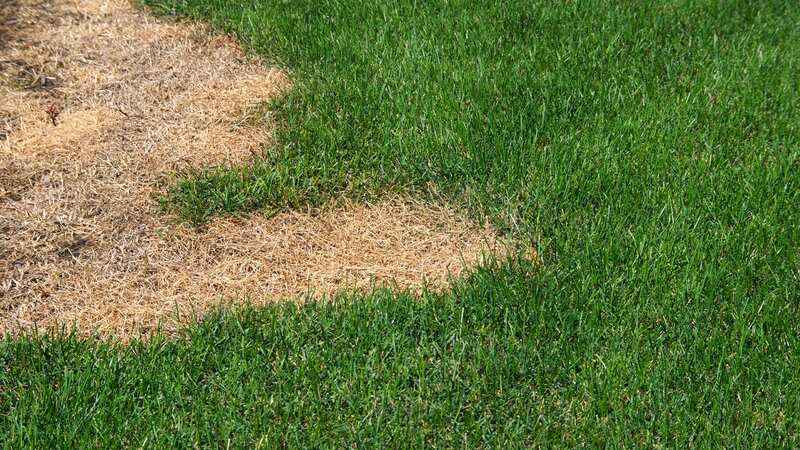Revive dead lawn to 'lush green' with expert's trick that brings it back to life

As springtime approaches, green-fingered wannabe gardeners will want to make their lawns look luscious and green.
After a winter of freezing temperatures your grass is likely looking a little lacklustre, but it can be tough to know how to make it thrive again. Pests and general wear and tear can also be issues causing an unhealthy appearance.
Expert Chris McIlroy at The Grass People has shared how to enhance the beauty of your home to create your ideal, most relaxing outdoor space, that you'll be able to enjoy until it gets much chillier outside again.
Before taking any action on how to revive dead grass, Chris said it's important to look at the condition of your lawn and try to work out what has caused the decline. Is it lack of water, poor soil quality, excessive thatch, disease, or pests making it sparse? "Identifying the problem will help you tailor your approach for the best results", he said.
Chris suggested removing weeds and thatch, which is a layer of dead grass and organic debris that "accumulates between soil and living grass", and can "suffocate your lawn by blocking essential nutrients and water absorption". To get rid of it, use "a thatch rake or a specialised dethatching machine.
 Viral sausage roll debate leaves Brits confused about how to order at Greggs
Viral sausage roll debate leaves Brits confused about how to order at Greggs
You should also manually remove any weeds, moss or invasive plants competing with your lawn for nutrients and space". Chris also recommended aerating the soil to let your lawn breathe. He said: "Compacted soil restricts water, air, and nutrient movement to the grassroots. Aerate the soil using a garden fork or a mechanical aerator. This process creates small holes in the soil, allowing better circulation and root development."
Overseed your garden if you notice patches too. "Overseeding is the process of spreading new grass seeds over your existing lawn", Chris explained. Before you overseed, you should "gently rake the soil to create a seed bed and improve seed-to-soil contact. Then, apply the grass seeds evenly 50g per m2, using a seed spreader or by hand, and then water it to keep the soil moist for the six weeks that follow."
Chris said that the trick that really brings your lawn back to life is keeping the soil moist, which is really "important for the recovery of your lawn." He recommended: "After overseeding, keep the soil moist but not soaked and forming puddles. Water deeply and infrequently to encourage deep root growth. Avoid frequent shallow watering, which promotes weak root systems and weed growth."
Feeding your lawn with fertiliser is also important, as it "will replenish essential nutrients and help stimulate healthy growth. Choose a slow-release fertiliser since this type of fertiliser feeds over 12-16 weeks. This will give your grass strength to establish and grow its best."
Chris recommended that as your lawn regains strength, you "monitor it regularly for weed and pest infestations." You should "remove by hand, or spot-treat weeds as soon as they appear", and you may use weedkiller if you need to. Similarly, keep your eyes out for any pests and "employ environmentally friendly control methods."
A regular mowing routine is important when it comes to making your lawn as luscious as possible, and Chris said: "Set your mower at the appropriate height for your grass species and trim no more than one-third of the grass blade at a time. Regular mowing encourages healthy growth and discourages weeds, so try and mow your lawn once a week in spring, summer and autumn."
Most importantly - a dead lawn is not a lost cause. If you follow Chris' expert advice, "you can revive it and transform it into a beautiful, vibrant landscape once again." It's important to note that " lawn recovery takes time and patience, so be consistent with your efforts and adjust your approach as needed. With proper care and maintenance, you'll be able to maintain your lush, green lawn that will be the envy of your neighbourhood."
Read more similar news:
Comments:
comments powered by Disqus

































